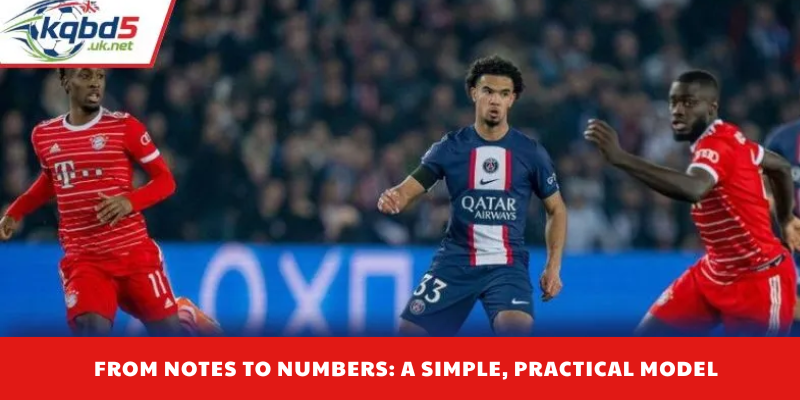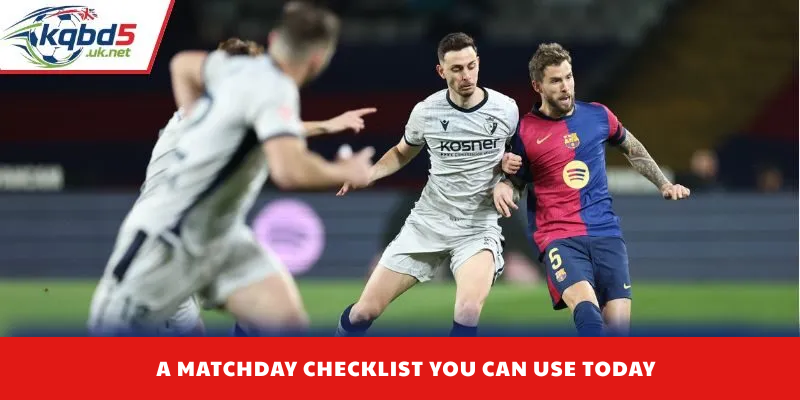Odds are not just numbers. They are condensed market expectations, injury whispers, travel fatigue, and tactical trends, all priced into one line. Approached correctly, Soi Kèo Bóng Đá becomes a disciplined way to interpret that information—before, during, and after a match. This guide distills a professional, transparent workflow: how to read the board, which data to prioritize, when to act, and how to review outcomes with kqbd so every weekend makes you a little sharper than the last.
What Odds Really Say (and What They Don’t)
Odds summarize probability plus margin. They imply chances, not guarantees. Treat them as a starting point for inquiry:
- Implied probability: Convert fractional or decimal odds into a percentage to understand the market’s baseline view.
- Margin (overround): Every board includes a built-in cushion. Knowing it helps you judge how “expensive” a market is.
- Price vs. prediction: Odds reflect consensus expectations, not a certain future. Sound Soi Kèo Bóng Đá aims to find where expectations may be slightly misaligned with reality.

Core Markets You Should Understand
Asian Handicap
Removes much of the draw variance and centers analysis on true team strength. Quarter-handicaps (±0.25, ±0.75) split stakes, smoothing volatility. Read the handicap in the context of fatigue, tactics, and substitutions.
Over/Under (Totals)
Think in expected goals: shot volume, shot quality, set-piece frequency, and pace. A rising total without major news often signals tactical expectation shifts or model upgrades behind the scenes.
1X2 (Match Result)
Pure probability triad. Use when the outcome itself (not margin) is your focus—e.g., knockout fixtures where extra time complicates totals and handicaps.
Professional tip: For any market, log the opening line, current price, and closing price. The delta between them reveals whether the market eventually validated your read.
A Clean, Repeatable Workflow for Football Odds Analysis
Step 1 — Frame the Match
- Context: Competition phase, stakes, rest days, travel distance, climate.
- Tactics: Preferred formations, pressing triggers, set-piece routines.
- Availability: Suspensions, injuries, returning players, and likely minute caps.
Step 2 — Build a Data Spine
Create a consistent, minimal dataset you can update quickly:
- Recent form (non-overlapping sample, e.g., last 6–10 matches)
- Underlying metrics (shots, shots on target, xG-like proxies, set-piece share)
- Game state splits (how teams behave when leading/trailing)
- Head-to-head only as context, not as primary evidence
Step 3 — Read the Market
- Open → Current: Identify early steam (sharp money) versus public action closer to kickoff.
- Line clusters: If the board across multiple outlets moves in unison, it’s often fundamental news; isolated drift can be noise.
- Key numbers: In totals, 2.0/2.25/2.5 are inflection points; in handicaps, moving through 0 (pick) is meaningful.
Step 4 — Align with Results
After full time, reconcile your notes with kqbd. Confirm the scoreline, cards, and timing of goals. Flag where your read matched the performance and where luck, variance, or missed news intervened.
The Information Hierarchy: What Moves a Line Most
1) Team News With Minute Value
A winger at 100% is not the same as a returning star with a 30-minute cap. Price impact depends on role, not just name recognition.
2) Tactical Mismatches
Press-resistant midfields vs. high press. Full-backs who invert vs. wingers who refuse to track. These patterns can justify handicaps and totals shifting without any injury headline.
3) Rest, Travel, and Congestion
Three matches in eight days, long flights, and early kickoffs alter intensity. Congested windows frequently nudge totals downward and increase rotation risk.
4) Weather and Pitch
Heavy rain elevates randomness, favors set pieces, and can depress totals—unless one side dominates aerially.
Read more [1065+] Couple Dp, Pics, Images, Photos, Pictures & Wallpapers (2025)
From Notes to Numbers: A Simple, Practical Model
You don’t need a lab to elevate Soi Kèo Bóng Đá. Start with a lightweight approach:
- Baseline strength: Rolling offensive/defensive ratings (goals and shot quality proxies).
- Adjustments: Apply small, explicit modifiers (±) for rest disadvantage, travel, and verified team news.
- Scenario splits: Simulate early lead vs. early concession; some teams collapse under pressure, others accelerate.
- Price translation: Convert your edge into implied probability. If your view deviates materially from the board, you have a reasoned opinion; if not, pass.
Record everything. Over a month, you’ll see where your edge tends to live (totals? home handicaps? niche leagues?).

Reading Line Movement Without Guesswork
Steam vs. Drip
- Steam: Sudden, multi-book move—usually credible information or respected models.
- Drip: Gradual, inconsistent creep—may be public sentiment or small liquidity pushes.
Fake Moves
Occasionally, prices snap back to the opener. If your pre-match fundamentals did not change, trust the work and avoid chasing noise.
Common Pitfalls in Football Odds Analysis
- Overweighting head-to-head: Historical rivalry rarely survives tactical change.
- Chasing moves: If you missed the number, accept it. Value shrinks as price adjusts.
- Ignoring margins: Two similar prices can hide very different overrounds.
- Result bias: A late red card or deflection can warp post-match judgment; re-watch key sequences before updating priors.
- No pass discipline: The smartest “play” after diligent analysis is often no play at all.
Ethical and Responsible Approach
Treat Soi Kèo Bóng Đá as informational analysis. Respect local laws, set strict budgets, and keep detailed logs. If the process stops being calm and documented, step back. A professional tone means transparency, not bravado.
A Matchday Checklist You Can Use Today

24–48 Hours Before
- Confirm baseline ratings and fixture context.
- Draft likely XIs with minute caps.
- Record opening lines for handicap and total.
6–8 Hours Before
- Scan verified team news; adjust projections modestly.
- Note synchronized moves across markets.
- Prepare two or three scenarios (early lead, early red card, late subs).
60–90 Minutes Before
- Starting lineups released; finalize your read.
- Set reminders to log final odds and, after full time, consult kqbd for verification.
Post-Match
- Archive scoreline, cards, and timing.
- Separate performance causes (tactics, variance, news) from effects (score).
- Write one improvement for the next analysis.
Subtle Use Cases for Advanced Readers
Corners and Cards
Pace, wing reliance, and crossing volume influence corners; pressing duels and transitional fouls affect cards. Use them as supporting markets only when your tactical notes explicitly justify it.
Live Context
Halftime totals and handicaps hinge on stamina, bench impact, and momentum. Without pre-match prep, live reading devolves into guesswork; with preparation, it becomes structured and calm.
Conclusion
Soi Kèo Bóng Đá thrives on structure: a clear workflow, a compact dataset, and disciplined review with kqbd. Start small—log openers and closers, track minute-value team news, and write a two-line post-match note. In a few weeks, you’ll see patterns that feel less like noise and more like informed signals. Keep the tone professional, the records tidy, and the decisions unhurried. The result is not just better calls on matchday, but a durable, trustworthy approach you can rely on season after season.
Read more related blogs on Photosking. Also join us whatsapp.